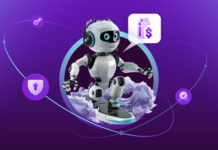Automation is the name of the game in 2016. Companies like Domino’s and Macy’s are increasing efficiency by using bots as a part of their customer service process. In fact, you’ve likely interacted with one while trying to reach a desired party through an automated phone system. Through an Interactive Voice Response (IVR) system, callers can often access the information they desire without having to talk to a real person.
Before you start worrying about bots with artificial intelligence taking over the world, consider the benefits of a fully-functioning IVR system. Information is available on demand without the need to wait for human intervention. Ultimately, there is a lot of potential to save time and money.
But as it is still a developing technology, IVR is not without its complications. It is far from a “perfect” system for managing phone customer service. To rectify some of these issues, technology giants Microsoft and Facebook are investing in bots to revolutionize artificial intelligence and machine learning.
Here’s the good, the bad, and the ugly of IVR, and what to expect as this technology evolves.
The Good Side of IVR
What’s the upside of IVR? IVR allows you to collect caller information that’s pertinent for solving their issue, and it directs callers automatically to the most relevant agent if necessary. This advanced method of voice interpretation can help to reduce potential operator error. The caller will still likely have to talk to a human, but IVR will make sure call goes to the appropriate agent in the quickest amount of time.
IVR also makes it possible to prioritize calls based on a customer’s value to the company (when integrated with an automatic call distributor), yet no customer is aware of their place in line relative to others. To reduce some of the frustration that comes with waiting on the phone, some IVR systems make it possible to hang up and receive a call back when an agent is free. However, before we give IVR too much credit, here’s some insight into the dark side of the technology.
The Bad Side of IVR
Angry customers in need of an immediate response will resent the option to get a call back – they want an answer, now. Automation can’t fix that.
Another common gripe with IVR is a menu that becomes so long, it’s practically unusable. Experts say that an IVR menu should not exceed a maximum of five choices. In general, the less menu options – the better. Many companies do not adhere to this cardinal rule.
In addition, sometimes the system doesn’t recognize a command or moves at a glacial speed. Machine learning and artificial intelligence are evolving to address these imperfections, but it’s hard to say when the optimal system will actually be in place.
The Rise of Machines in Customer Service
Even with IVR, there is one lingering problem. Surveys have found that 53% of Americans spend 10-20 minutes on hold every week. 86% of those people find themselves on hold every time they call a business. That’s a lot of wasted time for the busy American consumer.
And what’s the cost of bad customer service? Americans cost companies $108 billion per year due to bad customer service (according to Harris Poll). Because phones are not always the most desired medium of communication, companies are also adapting by providing customer service through online bots and social media interactions.
Alternative: Online Bots
According to Forbes, “Bots are a double-edged sword for the call center industry.” Bots can handle basic call routing to answer the major problem of IVR that relates to a lack of agents to attend to callers.
Ultimately, IVR will be able to replace low-skilled agents with bots. Higher-skilled call centers will be able to reduce many overall costs thanks to a more efficient flow of information. With bots and IVR, the customer experience will be greatly improved thanks to lower wait times and faster problem resolutions.
The eventual goal is for call centers to use artificial intelligence to interpret callers’ needs on a deeper level. Ideally, a bot will be able to interpret a person’s mood and accent, and adjust accordingly. This level of understanding will help callers develop a familiarity and level of trust in the system.
Some companies are already exploring and adopting technological advancements, like bots, in their customer service.
Alternative: Social Media Interactions
Besides IVR and chatbots, customer service interactions can be quickly addressed and resolved on social media. But handling customer service issues over social media is not without unique challenges.
According to Jay Baer of Convince and Convert, 42% of customers complaining on social media expect a 60 minute (maximum) response time. Depending on the size of the organization, and level of social activity, this expected response time can pose a challenge.
There are multiple tools and systems a company can put into place to handle social media interactions for customer service. Regardless of how you choose to handle it, just be sure to make a plan and act on it – customers won’t care if it’s not your ideal platform for handling customer service.
It would be remiss to go on without mentioning Glia’s own live engagement platform as an alternative or complement to IVR, bots, and social media interactions. Through extensive customer testing, it’s been found to have a 138% ROI over chat.
However you decide to handle the challenge of customer service, make sure to be constantly looking for ways to improve the customer experience. After all, a great customer experience correlates with positive revenue growth.
What do you think about IVR and bots? We’d love to hear your opinion on the topic!





